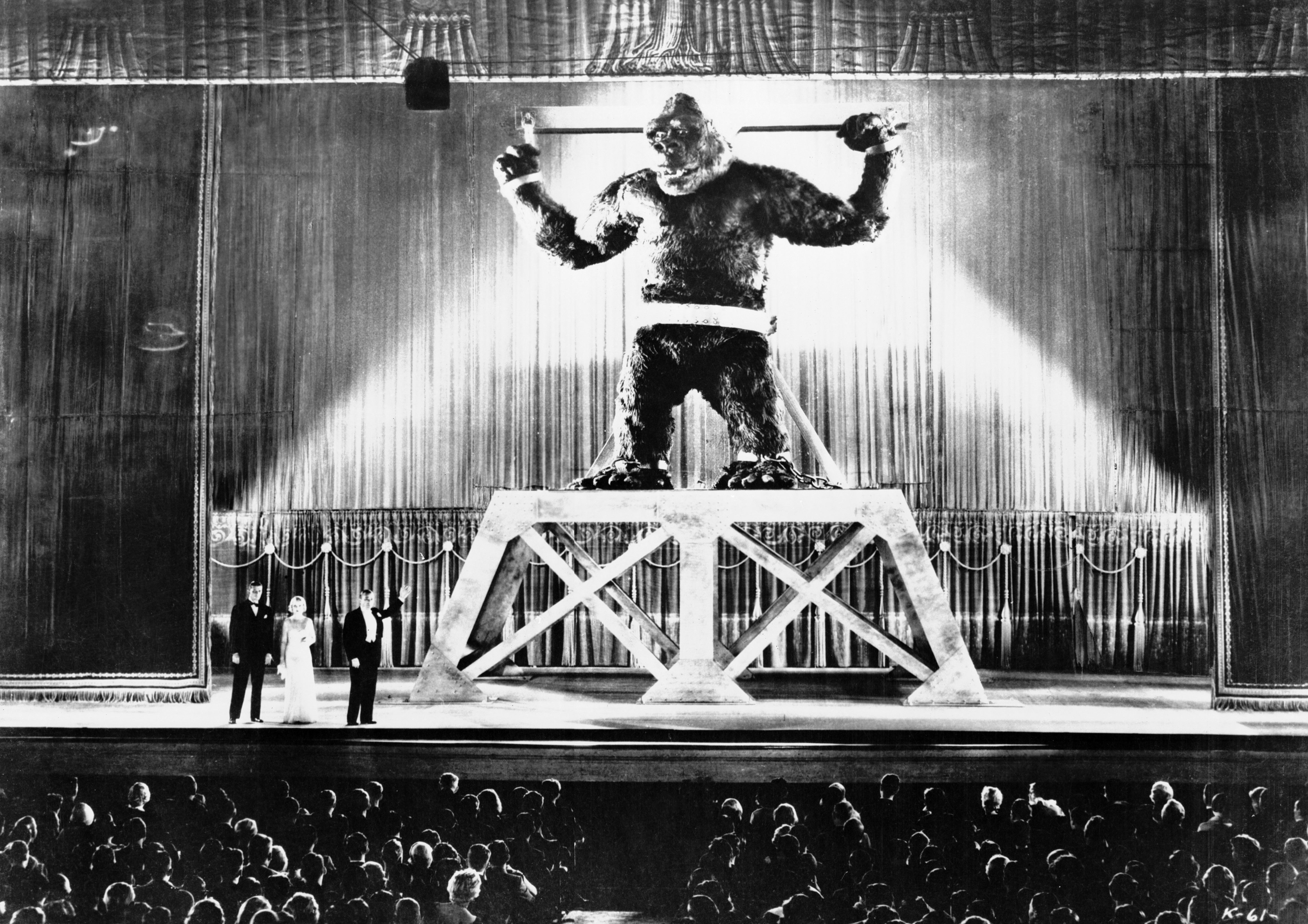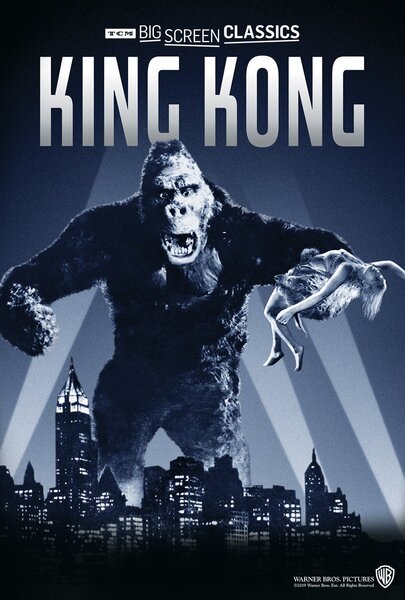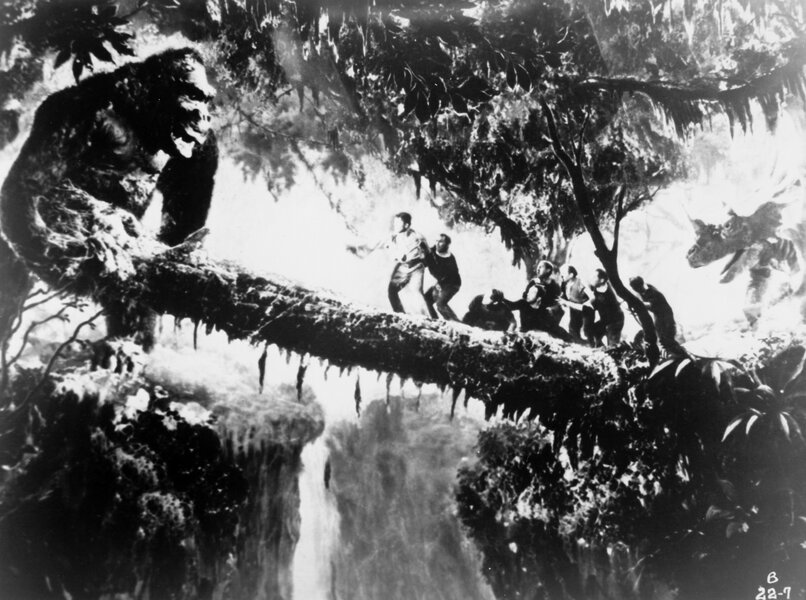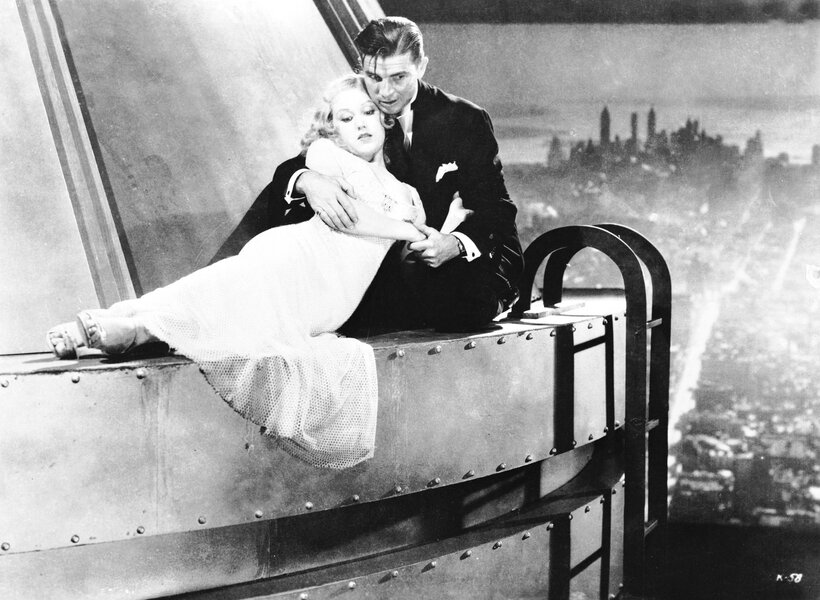Create a free profile to get unlimited access to exclusive videos, sweepstakes, and more!
How King Kong came out of a real-life scrapped Komodo dragon vs. gorilla fight

Ever seen an actual gorilla fighting a Komodo dragon? Well, unfortunately (or fortunately, depending on how you feel about animal cruelty) that fight fell through back in the 1920s, as the Depression sent potential investors running for the jungle. But, hoping to get at least some traction from this defunct battle royale, the hopeful promoter of the epic showdown, Merian C. Cooper, dreamed up King Kong instead — which, thanks to Fathom Events, you'll be able to catch on the big screen for the first time nationally in more than six decades.
As an aviator, professional adventurer, and military veteran of both Poland and the United States, Cooper lived a life fuller than most, and that's not even including his film work as a writer/director/producer/executive and honorary Oscar winner. But back in the roaring times before Kong and the Depression, Cooper was a champion of a genre called "the natural drama," kind of like a fictional film cut into the form of a documentary, which incorporated real-life footage and then spliced in staged scenes.
In the nascent days of the film industry, Cooper and his partner, Ernest Schoedsack, helped pioneer the genre, while creating natural dramas about an elephant and a tiger. They wanted to make a film about baboons next, after Cooper observed a tribe of the primates and found something dramatic about them. But through the course of developing the idea, he switched it to gorillas because he thought they had more personality.
Adventurer game respects adventurer game, so Cooper was, naturally, friends with William Douglas Burden, the famous explorer who established the Department of Animal Behavior at the American Museum of Natural History. In 1926, Burden and his first wife, Catherine White Burden, traveled to the Dutch East Indies island of Komodo, where the brazen young adventurer would become the first white man ever to capture the creature he nicknamed "King Komodo." He impressively (and seemingly cruelly) brought back two of the impressive creatures to the United States and gave them to the Bronx Zoo. Sadly, both died shortly thereafter, unable to survive in captivity.
Besides formerly alive giant lizards, Burden also brought back many a tall tale about these "prehistoric" creatures to his friend Cooper, who "got excited" and "thought it would be really cool if he made this gorilla movie, to have them fight with a Komodo dragon," Ray Morton, author of King Kong: The History of a Movie Icon From Fay Wray to Peter Jackson, tells SYFY WIRE. "So his original plan was he was gonna go to Africa and film gorillas, then capture a gorilla and take it to Komodo and let it fight with a Komodo dragon."
Like, fight. Actually.
Cooper was going to film all this and make it into a natural drama, but he couldn't get financing because of the Depression, so he put it on the back burner.
Fast-forward to 1931, when Cooper became an executive assistant to David O. Selznick, the head of production at RKO's Radio Pictures. There he met Willis H. O'Brien, the pioneer of stop motion, who had mastered his craft on 1925's The Lost World and was working on another dinosaur movie for the studio, Creation. Cooper realized that with O'Brien's skills he didn't actually need to go to Africa and Komodo to shoot his gorilla-vs.-Komodo-dragon movie. Whether said realization influenced his decision is story fodder at this point, but Cooper axed Creation, after some 20 minutes of footage had already been shot, at a cost upwards of $120,000.
That's not to say he didn't like O'Brien's work on the film, in particular the dinosaurs. "So he thought, 'What's better than a Komodo dragon, I'll have the ape fight a dinosaur!'" says Morton. "But once he figured that out, he had to make the ape gigantic, because a bigger ape has to fight the dinosaur."
The unfortunate Komodo dragons brought back to the Bronx, which died shortly thereafter, also influenced Cooper's Kingly visions. "When he was gonna make this gorilla picture, he wanted to bring the gorilla back to New York and have him in captivity and not be able to survive," says Morton. "But because he was a dramatist, instead of having it just die in the zoo, he wanted it to escape and cause all sorts of havoc, and that's of course what happens at the end of Kong."
"The movie was a smash hit, in that people would line up to see it again and again and again. People were amazed, they had not really seen a film like that," says Morton about the spectacle event of 1933, starring Fay Wray as the love object of a giant ape captured from his home island and put on display in New York City, only to use said city as his own personal jungle gym. "The film was an incredible hit, and a cultural hit, too."
Granted, without Kong's amazing technical achievements, the story itself wouldn't have garnered such massive acclaim upon release. O'Brien's stop-motion techniques, which were perfected in the "double-budget picture," remain a part of today's cultural landscape, as his influence can be seen dating back to Ray Harryhausen and Ray Bradbury, and all the myriad masters they influenced. "Pretty much any of the major special effects wizards that are working today will tell you that that movie was a giant influence on them, no matter what age they saw it," says Morton.
Such an ample budget allowed for detailed miniature sets for the animated creatures to tromp through, as well as some of the most "elaborate and lush and effective settings" ever created before CGI. The effects team didn't necessarily pioneer travelling mattes, matte paintings, and glass mattes on Kong, "but they certainly perfected a lot of those techniques."
The film definitely pioneered the process of miniature projection, "where they would put little screens in different places in the miniature set, and project the images of people that had been photographed on a separate stage, so that you could see like Fay Wray in a cave that really only existed as a miniature, and then they would literally project one frame at a time as they animated the Kong puppet one frame at a time. And when you see the film, it looks like the puppet is gigantic, interacting with the person."
Speaking of scale, Kong's size noticeably changes throughout the course of the film, as does his actual appearance. "The initial scenes of both the live-action and the miniature stuff that was filmed was the island stuff, and Kong was scaled to be 18 feet tall," says Morton. So they made an 18-inch puppet, 1-inch-to-1-foot scale, and filmed the island scenes.
But when they started the New York scenes, the doll didn't look nearly impressive enough compared to the miniatures they constructed to recreate The City. So they scaled Kong up and used a 24-inch puppet so that he seemed more impressive against the NYC backdrop. They also used the larger puppet in a couple of island scenes shot later on.
"The 18-inch puppet and the 24-inch puppet don't really look anything alike. And if you watch the film and you're carried along with it, you don't notice," says Morton. "But if you compare his looks scene to scene, he really changes his appearance through the whole movie, and it's really kind of funny."
Regardless of which puppet you're looking at, though, Kong will look as kingly as can be when Fathom Events unleashes the beast on the big screen for one day only, this Sunday, March 15, as part of the TCM Big Screen Classics series. "The size of the screen will allow Kong to come across in the gigantic overpowering way he's supposed to come across, because the actual image projected on the screen is about how big he's really supposed to be if you see it in a big enough theater."
Sounds far better than a Komodo-dragon-vs.-gorilla fight, right?





























